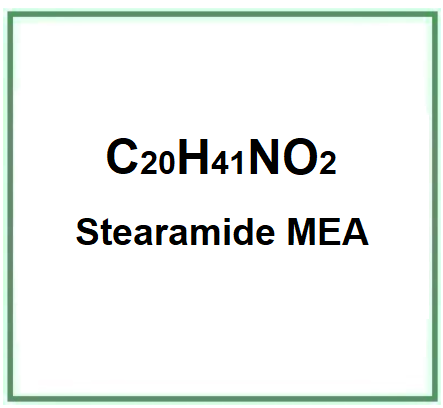Stearamide MEA is a chemical compound, ethanolamide of stearic acid. Ethanolamides consist of carboxylic acid and amides.
It appears in the form of a white powder.

MEA (2-aminoethanol) or Monoethanolamine belongs to the first generation of ethanolamines, is a primary amine and is a strongly alkaline agent, corrosion inhibitor and chemical intermediate.
What it is used for and where
Cosmetics
Antistatic agent. Static electricity build-up has a direct influence on products and causes electrostatic adsorption. The antistatic ingredient reduces static build-up and surface resistivity on the surface of the skin and hair.
Surfactant - Foam booster. Its function is to introduce gas bubbles into the water for a purely aesthetic factor, which does not affect the cleaning process, but only satisfies the commercial aspect of the detergent by helping to spread the detergent on the hair. This helps in the commercial success of a shampoo formulation. Since sebum has an inhibiting action on the bubble, more foam is produced in the second shampoo.
Viscosity Enhancing Agent - aqueous. Since viscosity is important for increasing the chemical and physical stability of the product, Viscosity Enhancing Agent acqueous is an important dosage factor in gels, suspensions, emulsions, solutions. Increasing viscosity makes formulations less sedimentary and more homogeneously thickened.
Safety
MEA should not be included in products formulated as aerosols and in products containing N-nitroso. Scientific literature agrees that MEA can penetrate and absorb into the skin and cause skin irritation, particularly on the scalp.

- Molecular Formula C20H41NO2
- Molecular Weight 327.5 g/mol
- CAS 111-57-9
- UNII 03XV449Q24
- EC Number 203-883-2
Synonyms:
- Stearoylethanolamide
- N-(2-hydroxyethyl)octadecanamide
References_____________________________________________________________________
Lanigan, R. S. (2001). Final report on the safety assessment of Stearamide DIBA-Stearate. International journal of toxicology, 20, 91-97.
Fiume, M. M., Heldreth, B. A., Bergfeld, W. F., Belsito, D. V., Hill, R. A., Klaassen, C. D., ... & Andersen, F. A. (2015). Safety assessment of ethanolamides as used in cosmetics. International journal of toxicology, 34(1_suppl), 18S-34S.
Malik, A., & Claoué, C. (2012). Transport and interaction of cosmetic product material within the ocular surface: beauty and the beastly symptoms of toxic tears. Contact Lens and Anterior Eye, 35(6), 247-259.
Klopman, G., Ptchelintsev, D., Frierson, M., Pennisi, S., Renskers, K., & Dickens, M. (1993). Multiple computer automated structure evaluation methodology as an alternative to in vivo eye irritation testing. Alternatives to Laboratory Animals, 21(1), 14-27.
![]() Stearamide MEA
Stearamide MEA 



